JUNE SCHEDULE
Clare Langan. Flight from the City, 2015 (Vuelo desde la ciudad)
Sena Başöz, The Box, 2020 (La caja)
Patty Chang, Invocation For a Wandering Lake: Part 1 & 2 , 2016 (Invocación por un lago errante: Parte 1 y 2)
Rehana Zaman. Sharla, Shabana, Sojourner, Selena, 2016.
Kenneth Tam. Breakfast in Bed, (Desayuno en la cama), 2016
Victoria Verseau. Approaching a Ghost, 2020 (Acercándome a un fantasma)
Agnė Jokšė. Dear Friend, 2019 (Querida amiga)
Kiri Dalena. Mag-uuma (farmer), 2016 [Mag-uuma (granjera)]
Giulio Squillacciotti. What Has Left Since we Left (Italy, The Netherlands, 2020), 2020
Thania Petersen. Kassaram, 2020
Wojciech Dada, Katarzyna Górna y Rafał Jakubowic. Cleansing, 2020 (Limpieza)
Kerstin Honeit. My Castle your Castle, 2017 (Mi castillo, tu castillo)
Mihály Stefanovicz. 4_Runners, 2021. Video, 10' 16''
Julia Sbriller & Joaquín Wall. Torontoides, 2019. Video, 2' 17''
Neda Kovinić. Together Apart, 2020/2021 (Juntos separados). Video, 11' 15''
Himali Singh Soin. Setting the Stage For a Gathering of Friends, 2020. Video, 10' 35''
Polina Kanis. The Friendship Tree, 2021. Video 2K, 16' 1''
Clare Langan. Flight from the City, 2015
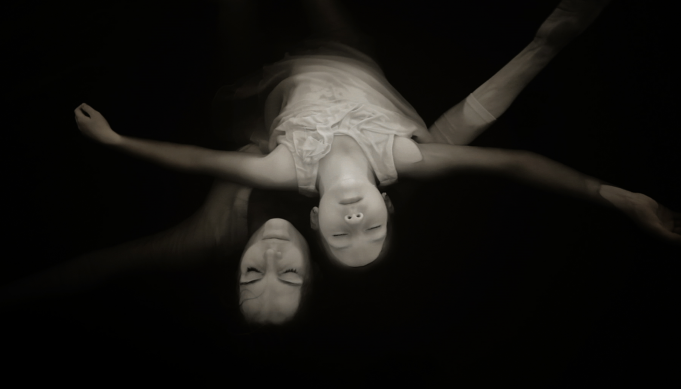
Clare Langan. Flight from the City, 2015 (Vuelo desde la Ciudad)*
Flight from the City (2015) is about connection, love, separation and transition. Shot in the hot springs of Flúðir, Iceland, the play focuses on the powerful bond between a mother and daughter. While the film addresses the universal concerns of humanity in intimate relationships between a child, a parent, or a partner, the name of the film may also suggest moving away from the safety of home. The experiences themselves become part of the film's narrative and the intertwined and estranged bodies that we see on screen could be ours.
Flight from the City is the second collaboration with the composer Jóhann Jóhannsson (1969-2018).
*Video, 6 '44'' Música: Jóhann Jóhannsson Cámara y edición: Clare Langan, Performers: Tristan Gribbin & Leela Lynn Arni.© Clare Langan. Cortesía de la artista & Galerie Anita Beckers, Frankfurt and Nichido Contemporary, Tokyo, Japón. Seleccionada por Crawford Art Gallery, Cork, Irlanda
 copy.jpg) Clare Langan (b. 1967) is an Irish artist and filmmaker. Exhibitions and screenings include Kino Der Kunst, Munich (2020); Physical Cinema Festival, Reykjavik (2019); Shaping Ireland, National Gallery of Ireland, Dublin (2019); The Best of Kino der Kunst, Dirimart, Istanbul (2018), B3 Biennial of the Moving Image, Frankfurt (2017), Lyon Biennale (2007), and Film Trilogy, MoMA, New York (2004).
Clare Langan (b. 1967) is an Irish artist and filmmaker. Exhibitions and screenings include Kino Der Kunst, Munich (2020); Physical Cinema Festival, Reykjavik (2019); Shaping Ireland, National Gallery of Ireland, Dublin (2019); The Best of Kino der Kunst, Dirimart, Istanbul (2018), B3 Biennial of the Moving Image, Frankfurt (2017), Lyon Biennale (2007), and Film Trilogy, MoMA, New York (2004).
Her films have received numerous awards, including the Prix Videoformes 2014, Clermont-Ferrand; the Principle Prize at the Oberhausen International Short Film Festival (2007) and she represented Ireland at the 25th Bienal de São Paulo (2002). In 2019, she was elected a member of Aosdána,i rish institution in charge of distinguishing outstanding artists of that nationality.
© Conor Horgan
Artist Q&A - Clare Langan
Where are you from and how did you become interested in moving image work?
I am from Dublin, Ireland and became interested in the Moving Image while studying Fine Art at NCAD Dublin. I was particularly taken at that time with the work of Andrei Tarkovsky and later while studying at New York University I was introduced to the experimental film scene there.
What inspired/influenced you to make the work?
The Icelandic composer Jóhann Jóhannsson had done the music for my film The Floating World, 2013, and asked me if I was interested in making a film for him in exchange. So he sent me the track Flight from the City, which then went on to launch his album Orphée. He gave me complete artistic control, and simply to make a film in reaction to his music. At the time I did not know his story behind the music. I shot the film in Iceland with a close friend of mine Tristan Gribbin and her 9 year old daughter Leela. Tristan had recently lost her father and I too had suffered a recent loss, so we discussed making a film about love and loss, connection and letting go. It was only when Jóhann released the album and I read the byline that I realised the music was also about his experience of love, loss and transition.
What are you working on at the moment?
I am currently doing the post production on a new multi-channel and single channel piece, The Rewilding. It explores the concept of ‘rewilding’, in reaction to recent studies on the mass extinction of animals and plants and the disintegration of the natural world. The film is set in a future world where mankind, animals and nature are more in balance with each other.
Sena Başöz, The Box, 2020 (La caja)
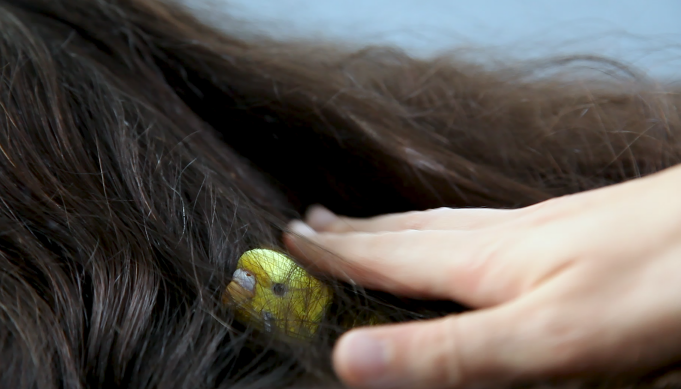
Sena Başöz. The Box, 2020 (La caja). Video, 4' 31'’ *
The Box, 2020, consists of a sequence of various objects hidden inside thick, dark, long hair being picked over sometimes by a male and sometimes by a female hand. In the video compassion and care trigger phenomena in contrast such as concealment and revelation, holding on and letting go, death and life.
Sena Başöz’s artwork focuses on healing processes after cases of trauma evolving out of the importance of care, the ways nature self-regenerates creating a balance in the long run and the organism's capacity to repair itself.
*. Cortesía de la artista. Seleccionado por Istanbul Modern Art, Turquía.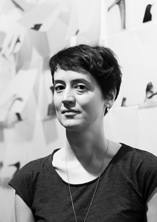 Sena Başöz (b. 1980, İzmir, Turkey) is an artist and filmmaker living and working in Istanbul. She received her BA in Economics from Boğaziçi University in 2002 and MFA from Bard College Milton Avery Graduate School of the Arts in Film and Video in 2010. Her recent solo exhibitions include: Ars Oblivionis, Lotsremark Projekte, Basel (2020); A Consolation, Krank Art Gallery, Istanbul (2020); Hold on Let go, MO-NO-HA Seongsu, Seoul (2020) and On Lightness, DEPO Istanbul (2018). She has participated in group exhibitions such as Transitorische Turbulenzen, Kunstraum Dreiviertel, Bern (2020); Studio Bosporus, Hamburger Bahnhof, Berlin (2018); Quiet Dialogue, Tokyo Metropolitan Museum (2018) and Sharjah Biennial Offsite Exhibition: Bahar, Istanbul (2017). She participated in artist residencies at Cité Internationale des Arts, Paris (2017), Atelierhaus Salzamt, Linz (2010) and Delfina Foundation, London (2020).
Sena Başöz (b. 1980, İzmir, Turkey) is an artist and filmmaker living and working in Istanbul. She received her BA in Economics from Boğaziçi University in 2002 and MFA from Bard College Milton Avery Graduate School of the Arts in Film and Video in 2010. Her recent solo exhibitions include: Ars Oblivionis, Lotsremark Projekte, Basel (2020); A Consolation, Krank Art Gallery, Istanbul (2020); Hold on Let go, MO-NO-HA Seongsu, Seoul (2020) and On Lightness, DEPO Istanbul (2018). She has participated in group exhibitions such as Transitorische Turbulenzen, Kunstraum Dreiviertel, Bern (2020); Studio Bosporus, Hamburger Bahnhof, Berlin (2018); Quiet Dialogue, Tokyo Metropolitan Museum (2018) and Sharjah Biennial Offsite Exhibition: Bahar, Istanbul (2017). She participated in artist residencies at Cité Internationale des Arts, Paris (2017), Atelierhaus Salzamt, Linz (2010) and Delfina Foundation, London (2020).
Artist Q&A – Sena Başöz
Where are you from and how did you become interested in moving image work?
I am from Turkey and I live in Istanbul. The departure point of my practice has been the friction I was feeling between my body and the immediate space I lived in. Feeling a strong alienation to the office space of the 9 to 6 job I was working at right after finishing my undergraduate degree, I started making a series of performative videos expressing my fish-out-of-water status. I bought a camera just to document my life in that corporate environment. It worked like a visual diary. I was holding on to the transformative healing power of expression.
What inspired/influenced you to make the work?
The Box consists of a sequence of various objects hidden inside thick, dark, long hair being picked over sometimes by a male and sometimes by a female hand. In the video, compassion and care trigger phenomena in contrast such as concealment and revelation, holding on and letting go, death and life. My work focuses on healing processes after cases of trauma evolving out of the importance of care, the ways nature self-regenerates creating a balance in the long run and the organism's capacity to repair itself. The hair is dead tissue extending from our living body, so I see it as a space in-between life and death just like soil. In the video the hair looks like an uncanny landscape. I thought about and experimented with what this landscape can host. Human hair is also similar to animal fur and reminds me of our creature-hood. Thus, it makes me question our relationship to nature and each other as human beings.
What are you working on at the moment?
Currently I am working on the publication of my artistic research and recent solo show in Basel. Towards the end of 2020, I spent two months in Basel as a resident artist. I focused on what the city holds in its archives and what flows through without being archived. I conducted interviews with archivists of important archives of the city and people with immigrant backgrounds to explore transnational cultures of memory that extend from Basel to Turkey. I took the Rhine river as a metaphor and created an installation and a new video piece. The book will bring together the interviews.
Patty Chang, Invocation For a Wandering Lake: Part 1 & 2, 2016
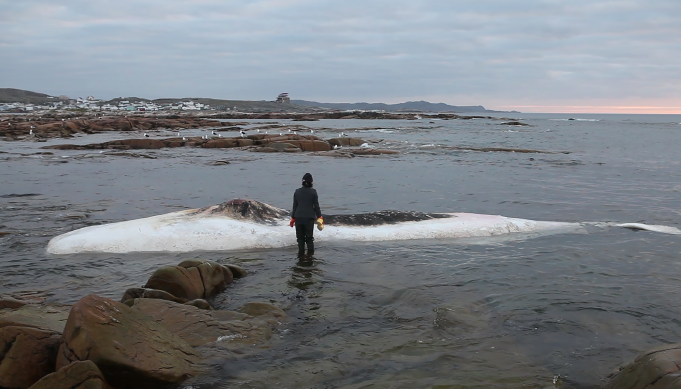
Patty Chang, Invocation for a Wandering Lake: Part 1 & 2, 2016 (Invocación por un lago errante: Parte 1 y 2). Video, 12'.*
Patty Chang’s Invocation for a Wandering Lake: Part 1 & 2 (2016) calls for contemplation of human and non-human lives, the natural environment, and destructive governing forces, as we witness the artist in ritual acts of care and mourning. The lifeless body of a whale floats off the coast of Newfoundland’s Fogo Islands, (Canada) a former fishing hub. The artist Patty Chang is seen meditatively washing the deceased animal. With similar attention, she scrubs the shell of an abandoned ship in the desert of Muynak, Uzbekistan, a defunct seaport on the receded Aral Sea. These repetitive acts seem almost absurd and unnecessary, as these entities could never return to life. Nevertheless, she continues to perform rituals of care, perhaps as a way to process their fateful ends. Over the last year, we collectively experienced extreme loss due to the ongoing pandemic. If we are to create new ways of living, perhaps we first need to practice ways of mourning, mending, and contemplating through rituals of care, as the film suggests.
* Cortesía de la artista. Seleccionada por Ballroom Marfa, EE.UU.

Patty Chang (b.1972) is a Los Angeles-based artist and educator who uses performance, video, installation, and narrative forms when considering identity, gender, transnationalism, colonial legacies, the environment, large-scale infrastructure projects, and impacted subjectivities. Her work has been exhibited nationwide and internationally at such institutions as the Museum of Modern Art, New York; Guggenheim Museum, New York; New Museum, New York; M+ Museum, Hong Kong; BAK, Basis voor actuele Kunst, Utrecht; Hammer Museum, Los Angeles; Chinese Arts Centre, Manchester, England; the Museum of Contemporary Art, Chicago; San Francisco Museum of Modern Art; Times Museum in Guangzhou, China; and Moderna Museet in Stockholm, Sweden. She has received a United States Artist Fellowship, a Rockefeller Foundation Grant, a Creative Capital Fellowship, short listed for the Hugo Boss Prize, a Guna S. Mundheim Fellowship in the Visual Arts at the American Academy in Berlin, a John Simon Guggenheim Memorial Foundation Fellowship, and an Anonymous Was a Woman Grant. She teaches at the University of Southern California in Los Angeles.
Artist Q&A
Where are you from and how did you become interested in moving image work?
I was born in California, US. I began by working in live performance and when I had access to video cameras, I started using video.
What inspired/influenced you to make the work?
When I was in Newfoundland, I heard there was a beached whale not far from where I was staying. When I saw the whale corpse in the water, I felt very overwhelmed by sadness. I felt that I needed to do something about it and decided I wanted to wash the whale’s body. I bought a sponge and waders at the local department store and went into the cold water to try and wash it. A few years later when I was working near the Aral Sea in Uzbekistan, I saw a fishing boat moored in the sand. The sea had shrunk and the boat was in the desert. I felt a similar feeling of loss for the boat and the past, and decided to wash it as well.
What are you working on at the moment?
I am installing a 5-channel video installation at Pioneer Works in Brooklyn NY called Milk Debt. Milk Debt is a multi-part video project consisting of videos of lactating women pumping their breast milk as they recite lists of fears drawn from multiple communities across different geographical regions.
I am also working on a collaborative project related to climate change in conversation with Astrida Neimanis, a leading cultural theorist who works at the intersection of feminism and environmental change. Her research focuses on bodies, water, and climate, and how they can help us reimagine justice, care, responsibility, and relationship in times of climate catastrophe.
Rehana Zaman. Sharla, Shabana, Sojourner, Selena, 2016. Video, 22'
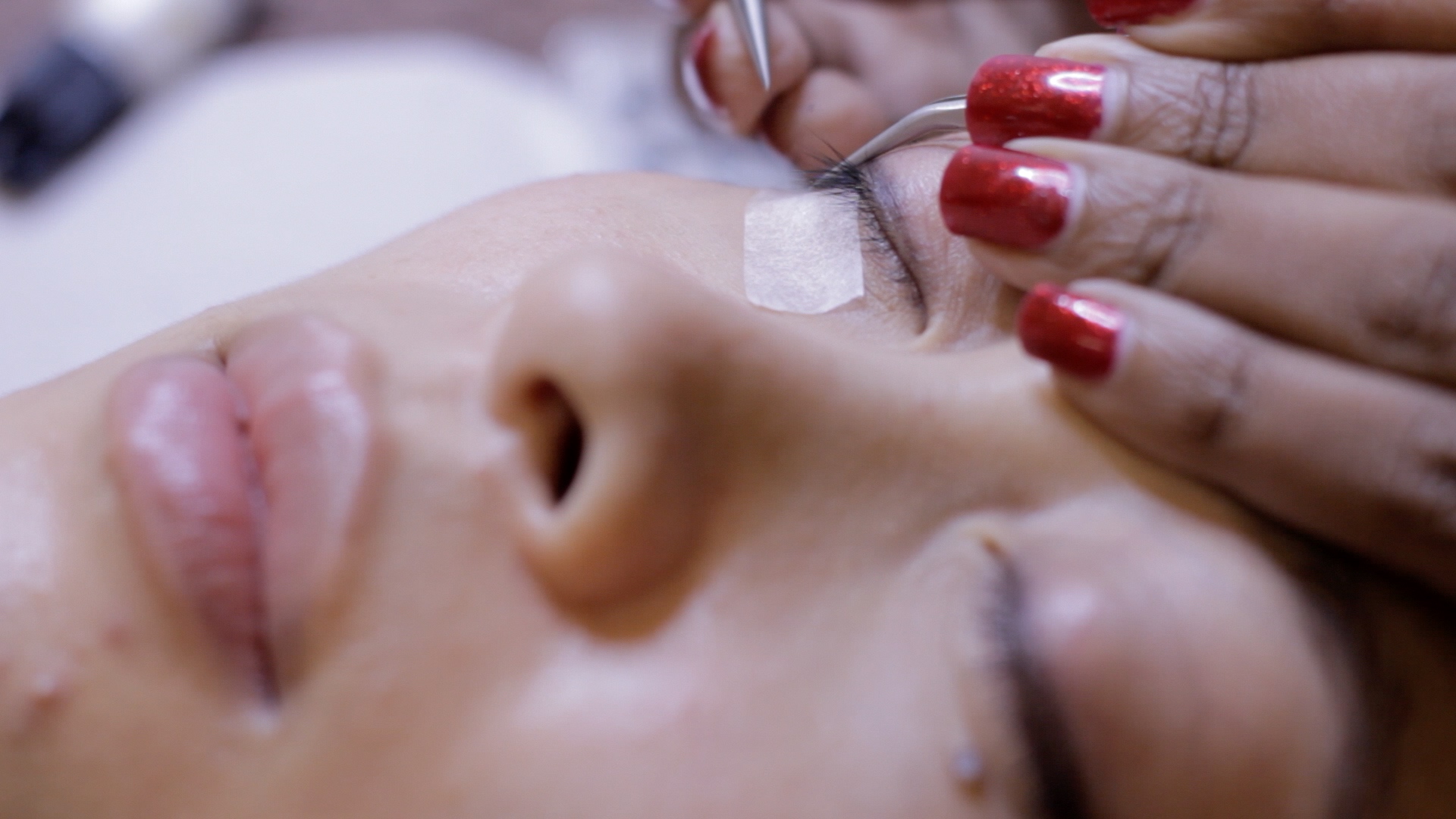
Rehana Zaman. Sharla, Shabana, Sojourner, Selena, 2016. Video, 22'*
In Rehana Zaman’s (b. 1982, UK) Sharla, Shabana, Sojourner, Selena, sees six female narrators share personal experiences in an audition roll call, some scripted, some spontaneous. Their testimonies describe perverse scenarios where racialisation and gender dynamics inflect the encounters of each protagonist in the workplace, religious spaces or sexual trysts.The script for the film references group dynamics and experimental feminist films. Stories are intercut with moments of physical contact in a beauty salon, a space where inter-corporeality and pleasure is offered as an alternative to the anxieties of collective experience.
*Cortesía de la artista y LUX. Seleccionado por Whitechapel Gallery, Londres
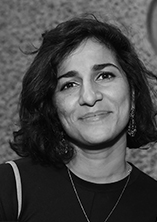 Rehana Zaman (b. 1982, Heckmondwike, UK) is an artist and educator whose work questions how social dynamics are produced and performed. Her films speak to the entanglement of personal experience and social life, where moments of intimacy disrupt cultural orthodoxies, state coercion and capital. Projects include British Art Show 9, Trinity Square Video, Canada and Serpentine Projects, London, UK (2021). Her work has been shown widely at art institutions, and film festivals in the UK and Internationally. In 2019 she co-edited Tongues with Taylor Le Melle published by PSS and was shortlisted for the Film London Jarman Award.
Rehana Zaman (b. 1982, Heckmondwike, UK) is an artist and educator whose work questions how social dynamics are produced and performed. Her films speak to the entanglement of personal experience and social life, where moments of intimacy disrupt cultural orthodoxies, state coercion and capital. Projects include British Art Show 9, Trinity Square Video, Canada and Serpentine Projects, London, UK (2021). Her work has been shown widely at art institutions, and film festivals in the UK and Internationally. In 2019 she co-edited Tongues with Taylor Le Melle published by PSS and was shortlisted for the Film London Jarman Award.
Kenneth Tam. Breakfast in Bed, (Desayuno en la cama), 2016
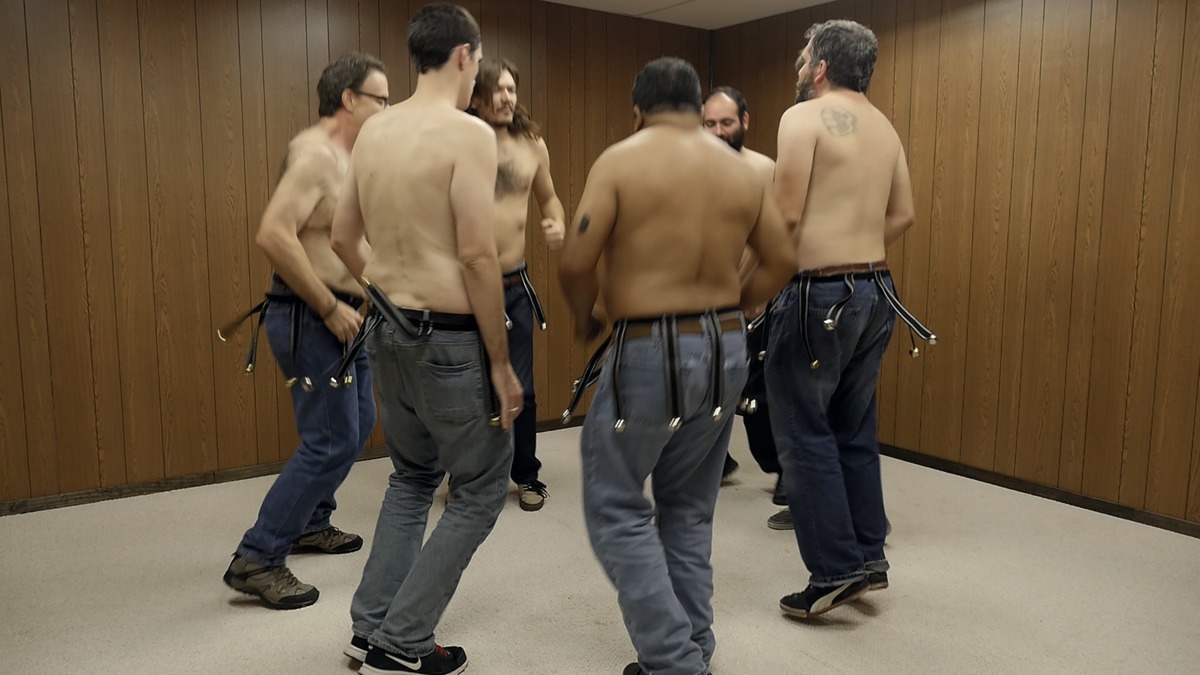
Kenneth Tam. Breakfast in Bed, 2016 (Desayuno en la cama). Video, 32’*
Part social experiment, part absurdist theater, Kenneth Tam's (b. 1982, United States) Breakfast in Bed (2016) explores male-to-male intimacy, roleplay, and constructions of masculinity. For the video, Tam recruited seven non-actors from online forums to participate in a mock men's social club. Occupying a stage-like domestic space built within the artist's studio, participants engaged in team-building activities, ritual-like movement exercises, and sincere exchanges of affirmation. Despite their lack of affiliation with one another before filming, these activities seem to foster a sense of tenderness among strangers. Employing playful improvisation and guided collaboration, Tam's project undermines normative male social conventions and deconstructs codes of behavior.
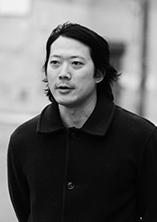 Kenneth Tam’s (b. 1982, United States) work takes the form of video installations that include moving image works and sculpture, and explores gender performativity and broader themes of the negotiation of identity. His work has been exhibited at The Sculpture Center, MIT List Visual Arts Center, and the Hammer Museum amongst other institutions. He will have a solo exhibition at the Queens Museum in the spring of 2021, and will participate in The Shed's Open Call in the summer. He has recently produced his first live (streamed) performance at The Kitchen, and has been an artist-in-residence at the Lower Manhattan Cultural Council, Pioneer Works, The Core Program at the Museum of Fine Arts, and the 18th Street Arts Center in Santa Monica, CA. He is a graduate of the Cooper Union.
Kenneth Tam’s (b. 1982, United States) work takes the form of video installations that include moving image works and sculpture, and explores gender performativity and broader themes of the negotiation of identity. His work has been exhibited at The Sculpture Center, MIT List Visual Arts Center, and the Hammer Museum amongst other institutions. He will have a solo exhibition at the Queens Museum in the spring of 2021, and will participate in The Shed's Open Call in the summer. He has recently produced his first live (streamed) performance at The Kitchen, and has been an artist-in-residence at the Lower Manhattan Cultural Council, Pioneer Works, The Core Program at the Museum of Fine Arts, and the 18th Street Arts Center in Santa Monica, CA. He is a graduate of the Cooper Union.
Artists Q&A
Where are you from and how did you become interested in moving image work?
I grew up in Queens in New York City. While I went to art school, I had no formal training in making moving image work. That happened out of necessity as my practice shifted into a more performative space and I needed a way to record what I was doing. While my initial use of the camera was basically for documentary purposes, my relationship to creating moving images has evolved since then. Also, I've always loved film and am very interested in the crossovers between arthouse cinema and moving image artworks.
Prior to Breakfast in Bed, I had been making video works that featured myself and another person in front of the camera working in improvised, loosely-scripted ways. I knew I wanted my next project to be situated in a group context, and to use the group as a way to understand the construction and performance of a certain kind of masculinity. I was interested to see how people performed within a group, especially the negotiations that arise when forming a consensus. I also knew that working within a group would allow me to step back behind the camera, which I felt was a natural shift in my work.
What are you working on at the moment?
I'm currently in the final stages of post-production on a new two-channel work that will debut at the Queens Museum in February. The project asks what Asian-American masculinity might be, and uses the stock figure of the cowboy to imagine alternative models of performance that meet at the intersection of race and gender. I'm also working on a new video installation that continues my interest in Asian-American fraternities, and the rituals they conduct as a means of creating group identity.
--
Victoria Verseau. Approaching a Ghost, 2020 (Acercándome a un fantasma)
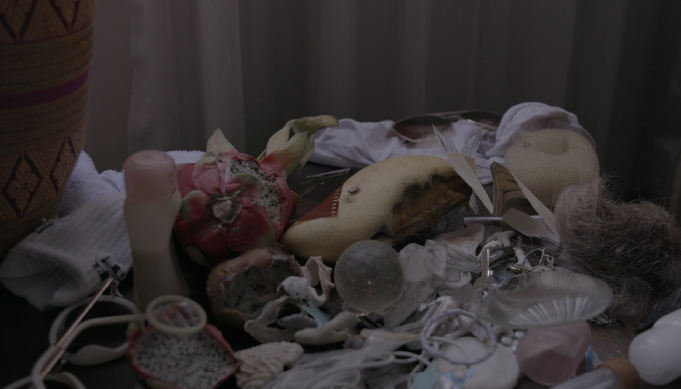
Victoria Verseau. Approaching a Ghost, 2020 (Acercándome a un fantasma). Video, 20' 16''
Approaching a Ghost is an attempt to capture the memory of my friend Meril and our time together far away from home in a remote city in Thailand. Meril and I met when we were about to undergo gender confirmation surgery, something we had longed for most of our lives. We awaited an uncertain future and supported each other in our worries. Three years after the operation, Meril decided to end her life. She was my only other trans-friend and I had always mirrored myself in her. Then and there, I felt my world fall apart. Some years later, I decided to travel back to the city where I had met Meril. I brought my camera with the intention of capturing the memory of us. There, I realized that my self-perception had changed and the elapsed time had affected my memories, so instead I found a void after us. The people I knew were gone. Left was only the familiar scenery with backdrop-looking buildings, streets and vegetation; thereto the absence of our presence.
I was caught by the empty environments that seemed like places stuck between reality and memories. I decided to catch this atmospheric emptiness with my camera and departed on an intriguing spatial exploration. I was drawn to abandoned places such as the worn-down hospital where we underwent the surgery, a desolate hotel and the tidal lands—in constant transition—all loaded with immense significance to me.
Approaching a Ghost has allowed me to process my personal experiences and I have found the means to address existential concerns, such as who am I and who do I want to be? Always having been anxious of speaking out loud, I have now found my voice; even if whispering. I want to tell my story and in doing so commemorate Meril and all those who didn’t have the energy, or were not allowed, to continue.
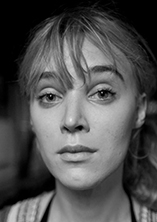
Victoria Verseau (b. 1988) is a Swedish artist and filmmaker working in a variety of media ranging from moving images to sculpture, installation and performance. She lives and works in Stockholm where she recently graduated with an MFA from the Royal Institute of Art.
Verseau’s artistic practice revolves around the exploration of issues of gender, identity and social structures. The starting point for her work is her personal experiences of being a trans- and a new woman. She often investigates ideas of transition and recollection, as well as the ambivalence in telling personal stories, while at the same time being protective of one’s integrity.
Victoria Verseau is currently working on the feature film Meril that will premiere in the coming years. She has had several solo exhibitions in Sweden. Her films have been screened internationally, her most recent being Exercise One (2016) and The Session (2015). In 2017, she received the prestigious Anna Prize for her work with film, a stipend awarded by Women in Film & Television and UN Women Sweden.
Artist Q&A
Where are you from and how did you become interested in moving image work?
I am from a small town in southern Sweden called Mariestad.
I think the first time I became interested in moving images was when my father bought a DV camera in the 90s to film our vacations. I quickly took over the camera and started making my own films.An important moment that made me move towards moving image work and art was when I, as a teenager, saw an exhibition by the Finnish artist Eija-Liisa Ahtila at Moderna Museet in Stockholm. She works with film, sculpture, photography and architecture in a way that really inspired me.Nowadays, I work both in the film and the art world. I have the impression the art world is more open when it comes to expressing yourself freely. I feel a certain freedom in working within the art field. It would be too limiting to just be in the film industry where you very often have to explain exactly what you intend to do and think of what the audience wants to see and maintain a good relationship with nervous financiers. Working with art film gives a lot to my film work because I can more freely explore my ideas within the arts.
What inspired/influenced you to make the work?
The work comes from my own experience. I went through a gender confirmation surgery in Thailand in 2012. There I met Meril, who was there for the same operation as me. We met at a big moment in our lives, we were about to realize something we had longed for our entire lives and we became good friends and supported each other. When isolated in the hotel, where we were recovering after surgery, we talked about our dreams and hopes for the future. Three years after the operation, I learned Meril had decided to end her life and my world fell apart. I mirrored myself on her and started to question everything.
A way of dealing with what had happened was to start writing our story and what we had been through, a way of commemorating Meril, to say that she had once existed because now it sort of feels like she never existed since her family never accepted her. (Years have gone by and it takes a lot of time to finance a feature film and it is still not finished.)
In 2019, I went back to the town where Meril and I had met, as research for the feature film. I started filming the places where Meril and I had once been, I tried to reach back in time to the memory of us to see if I could communicate with who we once were, but realized this was sort of an impossibility. Too much time had gone by, the places had aged and the years had erased the memory of us.
When I returned to Sweden and watched the material, I realized there were no other people in the images, the busy Thailand that is usually seen was not there. It was like watching a void, a place between memory and reality. The images depicted empty spaces where we once had been: the desolate hotel, a lonely dirt road, the vast tidal land that we came to when searching for a beach to feel a moment of freedom. When watching these images, I could sense some kind of presence in the barren environments. A presence that never reveals itself.
The whispering voice is reading from notes I took during the trip, my thoughts. It speaks of the memory of us, but also the many lost transpersons, the ones who could no longer go on, the ones who were murdered because of hate and fear, and the ones “hidden” by their ashamed families, once deceased. I whisper since I have long been doubtful of my own voice, I haven’t dared speak, but in this work I finally do, although quietly. In this work, I entrust the viewer with these partly secret and often invisible thoughts and stories.
What are you working on at the moment?
I am working on several exhibitions and a performance I will do in Sweden. I also have a solo exhibition in a large art institution in Sweden this spring that requires a lot of planning and work.
I am furthermore planning to film some more on this project since I received a grant from the Swedish Arts Grants Committee. As soon as it is possible, I want to go to the south of France, where Meril was from, and film. I also want to return to Thailand and document more.
Besides that, I am working on the feature film that I’ve worked on since Meril passed away in 2015. We have received development funding from the Swedish Film Institute and hopefully we will receive production funding as well.
Agnė Jokšė. Dear Friend, 2019 (Querida amiga)
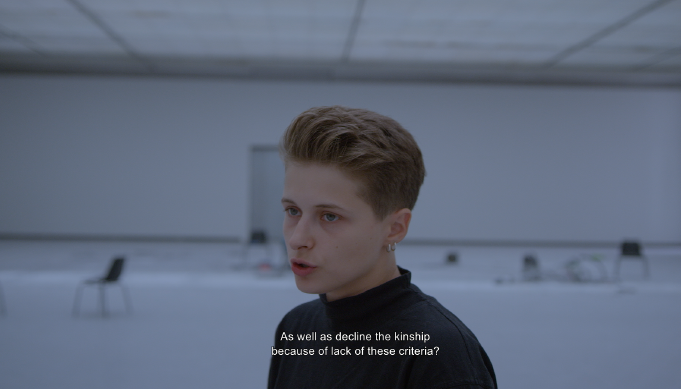
Agnė Jokšė, Dear friend, 2019 (Querida amiga). Video, 24'17''
Dear friend is a video by Lithuanian artist Agnė Jokšė. Performed by the artist and based on a letter-form text written in contemplation of friendship as platonic love between queer women, the work openly and sensitively speaks about various forms of love, affection and care in the contemporary world.
*Cortesía de la artista. Seleccionada por Contemporary Art Centre, Vilnius, Lituania.
 18.32.50.png) Agnė Jokšė (b. 1993) is currently based in Copenhagen, studying for a Master’s degree at the Royal Danish Academy of Fine Arts, School of Media Arts. In 2017, Jokšė graduated from Vilnius Academy of Arts, Department of Monumental Painting and Stage Design. Since 2018 she actively participated in various art projects. The work Dear Friend was produced by the Contemporary Art Centre in Vilnius and won the JCDecaux Award in 2019.
Agnė Jokšė (b. 1993) is currently based in Copenhagen, studying for a Master’s degree at the Royal Danish Academy of Fine Arts, School of Media Arts. In 2017, Jokšė graduated from Vilnius Academy of Arts, Department of Monumental Painting and Stage Design. Since 2018 she actively participated in various art projects. The work Dear Friend was produced by the Contemporary Art Centre in Vilnius and won the JCDecaux Award in 2019.
Artists Q&A
Where are you from and how did you become interested in moving image work?
I grew up in Vilnius, Lithuania. My main practice is writing, however, as a reader I’ve always been more curious about the sense lived through the text, the unsaid or somehow by words and their agreed meanings untellable. Moving image, as a medium, carries multidimensionality of elements
that can contain layers and layers of information. It’s exciting, like finding a treasure a box full of all kinds of tools to come closer and explore the space in between the lines.
What inspired/influenced you to make the work?
The passion for friends.
What are you working on at the moment?
Currently I’m working on a video work called Unconditional Love which is an ongoing inquiry into entangled cross generational family relations.
Kiri Dalena. Mag-uuma (farmer), 2016 [Mag-uuma (granjera)]
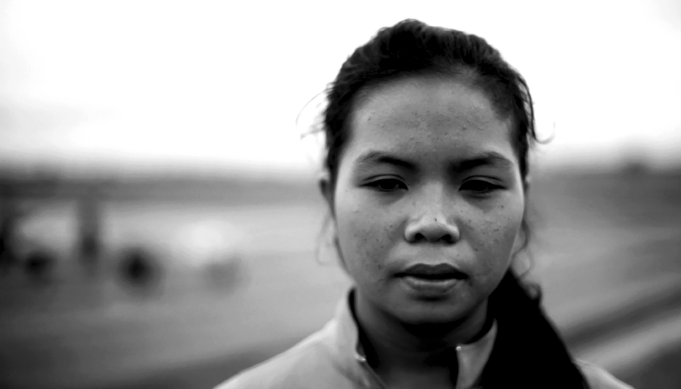
Kiri Dalena, Mag-uuma (farmer), 2016 [Mag-uuma (granjera)]. Video, 2' 16''. Cortesía de la artista, seleccionado por MCAD, Filipinas
Mag-uuma (Farmer), 2014 features a young female dissenter from Mindanao whose performance during a peasant demonstration caught the attention of filmmaker and visual artist Kiri Dalena. After agreeing to document the song she sang during the rally, Dalena filmed the young woman in the middle of a rice field while farmers submerged in knee-deep paddies continued to plant. However, the young woman performed another song, compelling those around her to pause and listen. This song of protest which she sings in the video is an old ballad learned from her mother, its verses speaking of a history of exploitation and poverty, circumstances that continue to cast a shadow on their community and personal lives.
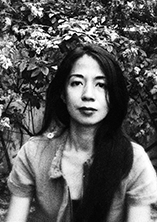 Kiri Dalena (b. 1975, Philippines) is a Filipino visual artist and filmmaker whose body of work confronts the underlying social conflicts in contemporary Philippine society. Articulating certain realities of injustice and inequality, Dalena’s deep understanding of the mass struggle greatly influences her artistic practice, depicting forms and histories of civil resistance. Her works assert the importance of protest and activism against state persecution. She participated in Berlin Biennale 11: The Crack Begins Within, KW Institute for Contemporary Art, ExRotaprint (2020); JIWA: Jakarta Biennale 2017, Gudang Sarinah Ekosistem, Jakarta (2017); and Singapore Biennale: If the World Changed, Singapore Art Museum (2013).
Kiri Dalena (b. 1975, Philippines) is a Filipino visual artist and filmmaker whose body of work confronts the underlying social conflicts in contemporary Philippine society. Articulating certain realities of injustice and inequality, Dalena’s deep understanding of the mass struggle greatly influences her artistic practice, depicting forms and histories of civil resistance. Her works assert the importance of protest and activism against state persecution. She participated in Berlin Biennale 11: The Crack Begins Within, KW Institute for Contemporary Art, ExRotaprint (2020); JIWA: Jakarta Biennale 2017, Gudang Sarinah Ekosistem, Jakarta (2017); and Singapore Biennale: If the World Changed, Singapore Art Museum (2013).
Artists Q&A
Where are you from and how did you become interested in moving image work?
I am based in Metro Manila now, but for some time I have been based outside of the city. I first became interested in moving image work when I was still a student in the University of the Philippines in Los Baños and I was slowly finding my way into the larger world. With the camera, I did not feel lost and felt that I had a center when I was framing and recording what was happening around me.
What inspired/influenced you to make the work?
I have worked as a human rights volunteer, and what is normally expected of me in peasant communities is to document incidents of human rights abuses. These are often in the form of interviews and testimonies about specific incidents, quantifiable and useful in paralegal work. Songs such as Mag-uuma do not serve this same purpose, but I am inspired to make them because they can hold something more, they can awaken something that I thought was impossible or rather, intangible, like hope.
What are you working on at the moment?
I am a resident artist for a museum project on American Colonial photography. The work is online and the process is online so I am adjusting to the remote and the non-tactile format. I am also invited to work on a video about “empathy.” I am also active in the human rights movement here in the Philippines. I contribute for video, photography, research and recently even making pins. That one is a lot of work, especially now, with our present government.
Giulio Squillacciotti. What Has Left Since We Left (Italy, The Netherlands, 2020), 2020
[¿Qué quedó desde que nos fuimos? (Italia, Países Bajos, 2020)].
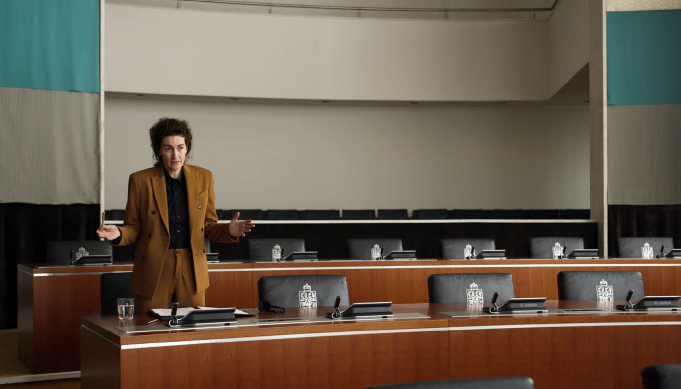
On February 7th 1992, the Treaty on European Union was signed in the Dutch city of Maastricht. Decades later, the representatives of the last three countries left in Europe meet again in the very same room where it was signed, this time to deliberate on the permanent shutdown of their Union. In what seems to be a looped therapy session, the three characters - helped by a British interpreter as a self-appointed analyst - try to deal with their feeling of loss. The conversation allows their political and personal bonds to be woven together metaphorically, compelling them to face their identity crisis and acknowledge what no longer is, what is left and what still can be of that Union.
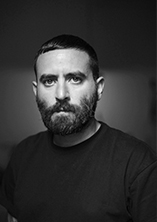 Giulio Squillacciotti (Rome, Italy 1982) Artist and film-maker, lives and works in Maastricht (NL) and Milan (I). His work is oriented mainly on the invention and mutation of traditions by merging together fiction and historical facts. Using film, documentary, sound and scenography, Squillacciotti produces research-based investigations that revisits history, crafting new stories from subjective perspectives, religion and popular culture. He holds a BA in Medieval Art History and earned a MA in Visual Arts from The Architecture University of Venice. He was Residency Fellow at the Jan Van Eyck Academie in the Netherlands.
Giulio Squillacciotti (Rome, Italy 1982) Artist and film-maker, lives and works in Maastricht (NL) and Milan (I). His work is oriented mainly on the invention and mutation of traditions by merging together fiction and historical facts. Using film, documentary, sound and scenography, Squillacciotti produces research-based investigations that revisits history, crafting new stories from subjective perspectives, religion and popular culture. He holds a BA in Medieval Art History and earned a MA in Visual Arts from The Architecture University of Venice. He was Residency Fellow at the Jan Van Eyck Academie in the Netherlands.
Artists Q&A
Where are you from and how did you become interested in moving image work?
I was born in Rome and I live between the Netherlands and Italy. I got into moving images from photography and the necessity of translating into sound, movement and storytelling possible narratives.
What inspired/influenced you to make the work?
The need of allegorising major European issues into kinship metaphors put into words said by improbable politicians during a sort of collective therapy session.
What are you working on at the moment?
I am working on a monologue for a theatre play taken out of the film, this time the protagonist will be the feelings of the interpreter called to translate that day in which Europe ended.
Thania Petersen. Kassaram, 2020
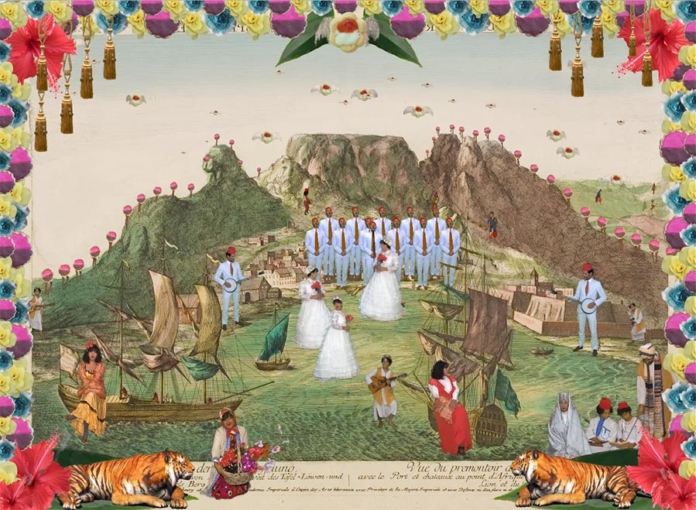
Kassaram interrogates the artistic strategies historically used by European colonial forces to demarcate oppressive hierarchies of people in South Africa. It highlights how present-day imperialist agendas perpetuate these practices by continuing to impose contemporary “orientalist” views onto diverse communities worldwide.
*Seleccionado por Bag Factory, Johannesburg
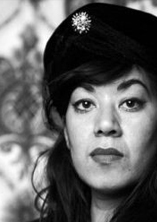 Thania Petersen is a multi-disciplinary artist who uses photography, performance, and installation to address the intricacies and complexities of her identity in contemporary South Africa. Petersen’s reference points sit largely in Islam and in creating awareness about its religious, cultural, and traditional practices. She attempts to unpack contemporary trends of Islamophobia through her analysis of the continuing impact of colonialism, European and American imperialism, and the increasing influence of right-wing ideologies. Threads in her work include the history of colonialist imperialism in Africa, Asia, and the Middle East, as well as the social and cultural impact of westernized consumer culture. Her work is also informed by her Cape Malay heritage and the practice of Sufi Islamic religious ceremonies. Petersen studied at Central Saint Martin’s College of Art in London. In 2018, Petersen held her solo exhibition IQRA at WHATIFTHEWORLD, Cape Town. She has hosted additional solo exhibitions in 2016 at the AVA, Cape Town and in 2017 at the Everard Read Gallery, Cape Town. She has participated in numerous group exhibitions both locally and abroad, including Radical Love at the Ford Foundation, New York (2019) and Present Passing: South by Southeast at the Osage Art Foundation, Hong Kong (2019). Petersen was awarded the Thami Mnyele Residency in Amsterdam in 2019.
Thania Petersen is a multi-disciplinary artist who uses photography, performance, and installation to address the intricacies and complexities of her identity in contemporary South Africa. Petersen’s reference points sit largely in Islam and in creating awareness about its religious, cultural, and traditional practices. She attempts to unpack contemporary trends of Islamophobia through her analysis of the continuing impact of colonialism, European and American imperialism, and the increasing influence of right-wing ideologies. Threads in her work include the history of colonialist imperialism in Africa, Asia, and the Middle East, as well as the social and cultural impact of westernized consumer culture. Her work is also informed by her Cape Malay heritage and the practice of Sufi Islamic religious ceremonies. Petersen studied at Central Saint Martin’s College of Art in London. In 2018, Petersen held her solo exhibition IQRA at WHATIFTHEWORLD, Cape Town. She has hosted additional solo exhibitions in 2016 at the AVA, Cape Town and in 2017 at the Everard Read Gallery, Cape Town. She has participated in numerous group exhibitions both locally and abroad, including Radical Love at the Ford Foundation, New York (2019) and Present Passing: South by Southeast at the Osage Art Foundation, Hong Kong (2019). Petersen was awarded the Thami Mnyele Residency in Amsterdam in 2019.
Wojciech Dada, Katarzyna Górna, Rafał Jakubowic. Cleansing, 2020 (Limpieza)
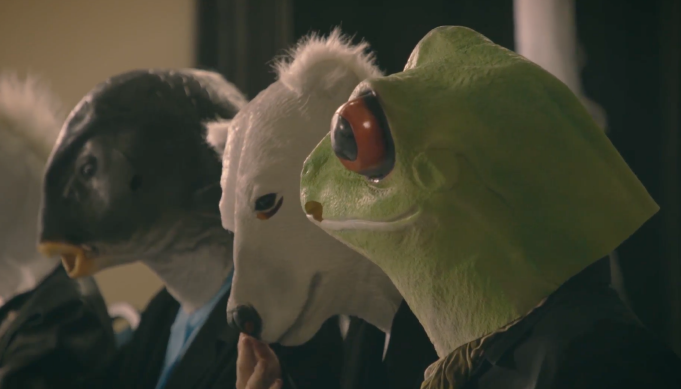
Wojciech Dada, Katarzyna Górna, Rafał Jakubowicz. Cleansing, 2020 (Limpieza). Video, 22' 42''. Cortesía de los artistas, seleccionado por Museum of Modern Art in Warsaw, Polonia
The film refers to the 2001 American production entitled “Conspiracy” [distributed in Poland with the Polish title reading: “Ostateczne rozwiązanie”, literally, “final solution”, trans.]. The American film is based on archival protocols documenting a conference held in Wannsee on January 20, 1942, where a group of Nazi dignitaries gathered to “resolve the Jewish question.” During the conference, the Nazis make the tragic decision to mass-exterminate Jews with the use of gas chambers. The film refers to the aesthetics and drama of the original, but takes on an entirely different issue: the legitimacy of human existence as a species in the eyes of animals. As part of the narrative, animals plot to take revenge on their enemies.
Various representatives of the animal kingdom act as judges and provide an extensive list of arguments against the harmful activities of homo sapiens. Different issues that have threatened the existence of life on Earth throughout the development of human civilization: from the suffering of animals on industrial farms, through tons of plastics polluting the oceans, to greenhouse gas emissions leading to climate catastrophe. The fact that the viewer has no doubt as to who actually takes part in the proceedings amplifies the grotesque character of these scenes. People –who, every day, kill animals all over the world– are hiding behind the images of mammals, birds, and reptiles. The cheap latex masks used in the film express the objectifying, colonial attitude of humans towards all other species inhabiting the planet. The film depicts the profound tragedy of animals –not only are their needs disrespected, but also especially in the case of farm animals– their suffering is not understood or treated with empathy.
Wojciech Dada (b. 1964) is an artist, graduate of the Faculty of Painting, Graphic Design and Sculpture at the Academy of Fine Arts in Poznań (1995). He has since taught at the University of Arts in Poznań. In 2002 Dada joined the Wunderteam artistic group, together with Rafał Jakubowicz, and, since 2005, Maciej Kurak, previously also with Paweł Kaszczyński and Włodek Filipek, who passed away in 2005. Dada has presented his works at solo and group exhibitions, including shows at Galeria Działań in Warsaw, National Museum in Krakow, Wyspa Gallery in Gdańsk, Kubus Gallery in Hannover, Center of Polish Sculpture in Orońsko, ON Gallery in Poznań, Zona Sztuki Aktualnej in Łódź, Entrepôt (port du canal) a Venarey-Les-Laumes, France, Anarchistyczny Klub/Księgarnia Zemsta in Poznań, and CSW Znaki Czasu in Toruń.
Katarzyna Górna (b. 1968) is an artist, graduate of the “Kowalnia” studio at the Academy of Fine Arts in Warsaw, representative of the genre known as critical art. Over the course of the last decade, Górna’s works have become socially engaged manifestos concerning, among others, the exploitation of workers, climate change, and multinationals. Since 2009, Górna has also been involved in the struggle for the rights of artists and cultural workers. She is the co-founder of the Citizen’s Forum for Contemporary Arts. In 2019, she received a doctorate in art from the Academy of Art in Szczecin.
Rafał Jakubowicz (b. 1974) is an artist, graduate of the Academy of Fine Arts (Faculty of Art Education and the Faculty of Painting, Graphics and Sculpture) and the University of Adam Mickiewicz in Poznań (Faculty of Modern Languages, majoring in Hebrew Studies). Member of the Workers’ Initiative Trade Union (Inicjatywa Pracownicza). In his projects and teaching practice, he addresses the problems of the precariat, the trade union movement, exploitation, and the practices of resistance in special economic zones. He is also interested in the social costs of transformation in Poland and Eastern Europe, unemployment and class discrimination, anti social housing policies, poverty ghettos and penal management of poverty, as well as the appropriation of memory in the context of historical policy. In 2015, he created an illuminated relief portraying Jolanta Brzeska, the Warsaw tenant rights activist, entitled “Musicie coś zrobić” [“You have to do something”] for the WARSAW UNDER CONSTRUCTION Festival.
Kerstin Honeit. My Castle your Castle, 2017 (Mi castillo tu castillo)
Kerstin Honeit. My Castle your Castle, 2017 (Mi castillo tu castillo).Video, 14’ 47’’. *Cortesía del artista y colección Video-Forum, Neuer Berliner Kunstverein (n.b.k.). Seleccionado por Video-Forum, Neuer Berliner Kunstverein (n.b.k.)
The video work my castle your castle by Kerstin Honeit (*1977 in Berlin) focuses on the debate about the reconstruction of the Berlin Palace on the foundation of the Palace of the Republic, the former seat of the People’s Chamber, the legislature of the German Democratic Republic (East Germany). Kerstin Honeit invites two of the craftsmen involved in the construction and demolition of the palace to a conversation at the palace construction site. The setting plays with the ambience of a television talk show and thus underscores the stage-like nature of the large construction site, which serves as a platform for a wide variety of stakeholders and interest groups. A musical interlude by two queer cowboys interrupts and caricatures this reference. The castle as an “identity-forming” building of national importance is thus reoccupied as a space by protagonists whose voice is otherwise lost in the debate
*Cortesía del artista y Colección Video-Forum, Neuer Berliner Kunstverein (n.b.k.). Seleccionado por Video-Forum, Neuer Berliner Kunstverein (n.b.k.)
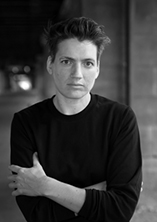 Kerstin Honeit (*1977 in Berlin, lives in Berlin) works as a filmmaker and artist with different forms of staging. Honeit’s artistic research focuses on the investigation of representational mechanisms in the production of hegemonic imagery in connection with cultural and linguistic modes of translation, especially in the cinematographic context. Her works have been shown at HMKV Dortmund, International Short Film Festival São Paulo, Ruhrtriennale, Kunsthalle Rostock, Off Biennale Cairo, Videoart at Midnight, MMOMA - D’EST, HKW Berlín, Sixty Eight Art Institute Copenhagen, Kunstmuseum Bonn and many more.
Kerstin Honeit (*1977 in Berlin, lives in Berlin) works as a filmmaker and artist with different forms of staging. Honeit’s artistic research focuses on the investigation of representational mechanisms in the production of hegemonic imagery in connection with cultural and linguistic modes of translation, especially in the cinematographic context. Her works have been shown at HMKV Dortmund, International Short Film Festival São Paulo, Ruhrtriennale, Kunsthalle Rostock, Off Biennale Cairo, Videoart at Midnight, MMOMA - D’EST, HKW Berlín, Sixty Eight Art Institute Copenhagen, Kunstmuseum Bonn and many more.
Kerstin Honeit © Dorothea Tuch
Artists Q&A
Where are you from and how did you become interested in moving image work?
I was born and raised in Berlin where I grew up watching a lot of television. It was the 1980s and I was able to flick between images of capitalism and socialism. The meeting of these two opposed worlds in the same television set, disgorging their mixed messages into my living room, fascinated me from early on and shaped my interest in the production of moving images.
What inspired/influenced you to make the work?
I still live in Berlin and I usually find the stories and political issues I am interested in literally outside my front door. The drastic changes this city has experienced during the last 30 years since the wall came down, for example, are impossible to overlook and have almost rendered the city unrecognisable. Neoliberal urban planning policies, gentrification as well as large reactionary building projects like the resurrection of the Prussian city palace, create a city exclusively for tourists and the rich, while long established communities are pushed out. Nevertheless, there is still a lot of activist energy left in the city to fight against investors and rampant privatisation. There is currently a huge campaign for a referendum to de-privatise 240,000 apartments, bringing them under public control. These gestures of resistance–and also solidarity– inspire me.
What are you working on at the moment?
My next project will investigate the aesthetics of poverty based on my own background, seeking forms of representation which examine economic discrepancy and structural classism (in the cultural sector as well), without being exploitative or exoticising.
Mihály Stefanovicz. 4_Runners, 2021 (4_Corredores)
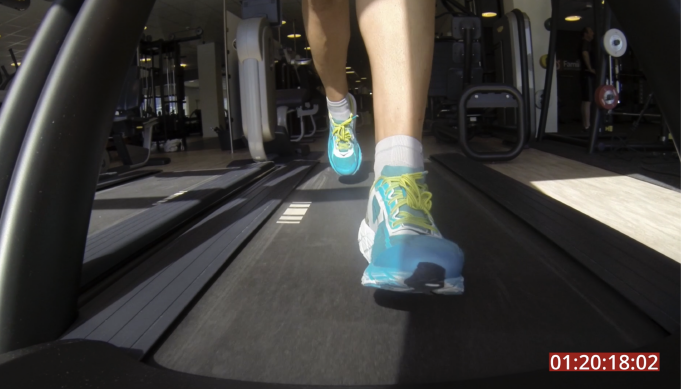
Mihály Stefanovicz. 4_Runners, 2021 (4_Corredores)*.
4_Runners, 2021. Four time based scenarios featuring ultra runners performing on treadmills, staged in gyms and private apartments throughout Norway. Stefanovicz works with the atavistic act of running and implies a post-modern, J. Baudrillard inspired a view on it: for the runner on the treadmill landscapes are no longer of any use, the soil is far outdated. The treadmill—>mill—>wheel is perpetually turning without ever touching the ground, suspending the runner in virtual distance, eliminating the notion of a journey. The final goal is solely the ecstasy of fatigue.
The piece attempts to navigate the viewer through two separated time planes simultaneously: One that is the actual duration of the video, and the other relates to the time which the runners spent on the treadmill. The formal one is measured in minutes while the latter is perceived in hours. That is to say, the stopwatch is the core of 4_Runners by providing the ultimate narrative: the passage of time.
4_Runners was developed from the multichannel video installation Document_3,4,5,6 under the support and guidance of Tromsø Kunstforening.
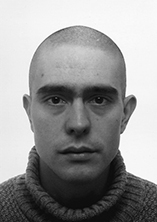 Mihály Stefanovicz (b.1991, Hungary) is a visual artist, whose practise is predominantly based upon photo imagery and video work. After a short period spent in Munich (Germany) and Portsmouth (Great Britain), in 2011 Mihály settled in The Hague (Netherland) for eight years, where he completed his bachelor degree at Royal Academy of Arts. After graduation, he spent one year assisting Paul Kooiker in Amsterdam. He was trained in the craft of traditional photography, focusing on studio photography. Later on, he turned towards appropriated imagery, which still is a substantial part of his work. In August 2016 he attended the artist in residence program of Listastofan Art Space in Reykjavik. In 2019 Mihály moved to Norway, where his focus shifted from static images to video work. Without prior experience in this medium, which he considers an advantage, he has started to produce uncut footage, that is shot in and represents "real-time". He gained his MA degree at Tromsø Academy of Contemporary Art in 2020. Currently, he lives and works in Tromsø.
Mihály Stefanovicz (b.1991, Hungary) is a visual artist, whose practise is predominantly based upon photo imagery and video work. After a short period spent in Munich (Germany) and Portsmouth (Great Britain), in 2011 Mihály settled in The Hague (Netherland) for eight years, where he completed his bachelor degree at Royal Academy of Arts. After graduation, he spent one year assisting Paul Kooiker in Amsterdam. He was trained in the craft of traditional photography, focusing on studio photography. Later on, he turned towards appropriated imagery, which still is a substantial part of his work. In August 2016 he attended the artist in residence program of Listastofan Art Space in Reykjavik. In 2019 Mihály moved to Norway, where his focus shifted from static images to video work. Without prior experience in this medium, which he considers an advantage, he has started to produce uncut footage, that is shot in and represents "real-time". He gained his MA degree at Tromsø Academy of Contemporary Art in 2020. Currently, he lives and works in Tromsø.
Julia Sbriller & Joaquín Wall. Torontoides, 2019.
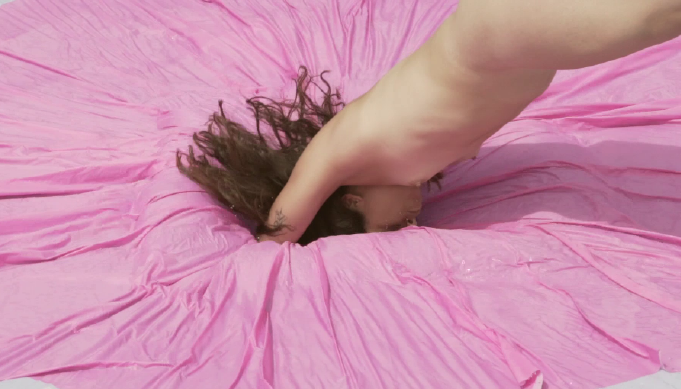
Julia Sbriller & Joaquín Wall, en colaboración con Roco Corbould. Torontoides, 2019*.
In geometry, torus is a surface of revolution generated by a closed curve rotating around an axis. The torus is said to be the only energetic or dynamic pattern that can sustain itself and that is made of the same substance as its environment.
Torontoides is a video performance by the Argentine duo Julia Sbriller and Joaquín Wall in collaboration with Roco Corbould, that reflects on the body that contains us: the planet, its hemispheres, its magnetic fields and its mysteries.
It draws on the individual and collective possibilities of challenging the physical properties between the liquid and the solid, gravity and non-Newtonian surfaces, wondering on how to unite the opposite poles of the planet travelling through an inner passage of the Earth.
This project was originally presented for the exhibition ´Division of Labor´ at the Art Gallery of Burlington, Great Toronto Area, Canada, curated by Suzanne Carte, in 2020 and counted with the support of the Fondo Nacional de Las Artes, Argentina.
* Video, 2' 17''. Seleccionado por Fundación Proa, Argentina
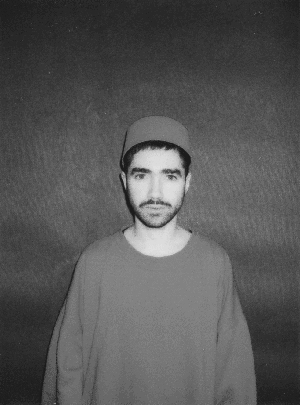 Julia Sbriller & Joaquin Wall are a multidisciplinary duo based in Argentina. Their work, essentially hybrid and experimental, draws on a variety of mediums, including performance, architecture, sculpture, choreography, video and installation.
Julia Sbriller & Joaquin Wall are a multidisciplinary duo based in Argentina. Their work, essentially hybrid and experimental, draws on a variety of mediums, including performance, architecture, sculpture, choreography, video and installation.
Julia & Joaquin work in relation to the individual and collective body, the properties of light and matter and the limits of physical laws. They are interested in producing work which can bring physical and experiences to both audience and participants, as new possibilities of encounter and physical interactions. From different supports they wonder around the notion of scale, the representation of the space and the body in it.
Their work centers around the possibilities of the human being to collectively connect with each other and individually (un)identify and transform itself; this way they intuitively research new forms and possibilities to communicate, encounter and live together. Their work has been exhibited in Swab Barcelona Art Fair (ES), Buenos Aires Photo (AR), Fundación Proa (AR), Munar Arte (AR), Art Gallery of Burlington (AR), Bendita Tu Fest Barcelona (ES). They are currently represented by Quimera Galería, in Buenos Aires, Argentina.
Cortesía de los artistas
Artist Q&A - Julia Sbriller & Joaquin Wall
Where are you from and how did you become interested in moving image work?
We are a multidisciplinary nomadic duo from Argentina. We are interested in video as a media that drives us into imagining actions and spaces, as a way to create, experience and register our own imaginary realities. Video, as a moving image, translates perfectly the feeling we aim to create both for the expectators and the participants in the production of each piece.
What inspired/influenced you to make the work?
For Torontoides, we were particularly inspired by the torus and a new potential connection between both hemispheres of the Planet. In geometry, torus is a surface of revolution generated by a closed curve rotating around an axis. The torus is said to be the only energetic pattern that can sustain itself and that is made of the same substance as its environment. With Torontoides, we wanted to sculpt the planet into a huge toroid, from Argentina (where the piece was produced) to Canada, (where the first was firstly shown).
We were also inspired by the possibilities of visually challenging the physical properties between the liquid and the solid, gravity and non-newtonian surfaces. We are always thinking about the body that contains us: The planet, its hemispheres, its magnetic fields and its mysteries.
What are you working on at the moment?
We are working on a new series about an intuitive approach to the telepathic property of water and the urge of creating huge sorbet (water based ice-cream) sculptures. We also are imagining a series of houses based on retro-futuristic water tanks we’ve been scouting around.
Polina Kanis. The Friendship Tree, 2021 (El Árbol de la Amistad).
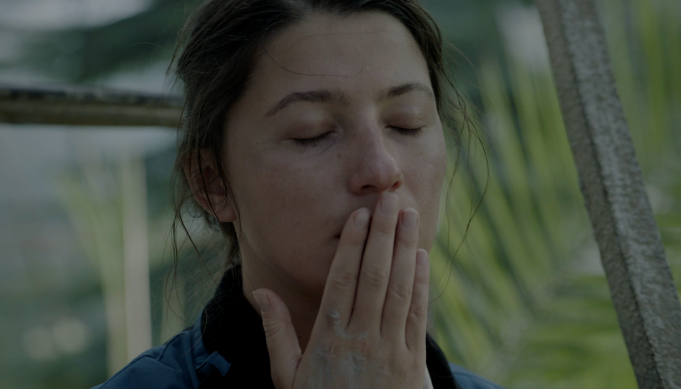
Polina Kanis. The Friendship Tree, 2021 (El Árbol de la Amistad)*
The Friendship Tree, 2021, was an ideological project of Soviet bio-engineering. Back in 1934, when Fyodor Zorin, a Soviet scientist, was seeking to develop new, hardy citrus fruits, he planted a wild lemon tree in the botanical garden in Sochi. Then he grafted other fruits onto its crown: Japanese mandarins, Spanish oranges, Chinese kumquats, Italian lemons, grapefruits and more, up to a total of 45 different citrus varieties. A tradition grew up: new grafts added to the tree by prominent politicians figures, artists, scientists, astronauts and athletes. Today there are more than 630 of these additional shoots, representing 167 different countries.
The Friendship Tree’s growth is not only physical. Since it was planted, it has also become a monument to our shared, global Earth. This video explores a utopian vision of political and ecological symbiosis – something which remains unattainable to this day. It shows a group of people living in a world where both the planet and the individual are transformed. Finding themselves in the situation of earth-without-us, they come together to recognise and mourn their humanity.
*Video 2K, 16'1'' Cortesía del artista. Seleccionado por Moscow Museum of Modern Art, Rusia.
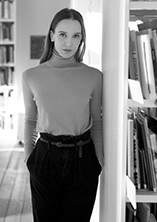 Polina Kanis was born in 1985 in Leningrad and graduated from the Rodchenko Art School, Moscow, in 2011. That same year she was awarded the Kandinsky Art Prize in the Best Young Artist category. In 2016 Kanis received the Sergey Kuryokhin Award in the Media Object category. Her work has been featured in numerous solo and group exhibitions, film festivals and screenings, including a solo show in Haus der Kunst Munich (2017), VISIO program in Palazzo Strozzi in Florence (2019), the parallel program of Manifesta 10, the 2015 edition of the Ural Industrial Biennial of Contemporary Art, Garage museum of Contemporary Art (2014, 2018), VI Moscow International Biennale for Young Art (2015), Moscow International Experimental Film Festival (2016/2018), Hamburg Short Film Festival (2019) and many others. Polina Kanis is based in Amsterdam, the Netherlands.
Polina Kanis was born in 1985 in Leningrad and graduated from the Rodchenko Art School, Moscow, in 2011. That same year she was awarded the Kandinsky Art Prize in the Best Young Artist category. In 2016 Kanis received the Sergey Kuryokhin Award in the Media Object category. Her work has been featured in numerous solo and group exhibitions, film festivals and screenings, including a solo show in Haus der Kunst Munich (2017), VISIO program in Palazzo Strozzi in Florence (2019), the parallel program of Manifesta 10, the 2015 edition of the Ural Industrial Biennial of Contemporary Art, Garage museum of Contemporary Art (2014, 2018), VI Moscow International Biennale for Young Art (2015), Moscow International Experimental Film Festival (2016/2018), Hamburg Short Film Festival (2019) and many others. Polina Kanis is based in Amsterdam, the Netherlands.
Cortesía de Moscow Museum of Modern Art, Rusia.
Artist Q&A Polina Kanis
Where are you from and how did you become interested in moving image work?
I am from St. Petersburg, moved to Moscow and now I’m based in the Netherlands. I have graduated from Rodchenko Art School majoring in Moving Image, though I have started studying photography. I have realized that moving images is the more challenging medium for me and allows me to develop my project's potential further. I can’t say I only work with moving images, though it always stays a significant element of my projects.
What inspired/influenced you to make the work?
In order to resist the prevailing structures, resistance itself must be interrogated. Challenging the notion of ‘action’ and ‘resistance’ is prerogative to reorient the definition of dissent. Rather than buying into the dichotomy of ‘to act’ or to remain ‘passive’ a new space must be forged. Responding to my ongoing work with ‘the non-event’, an un-suspenseful stasis, my proposed artistic work is a Toothless Resistance.
One of many starting points to this project is The Friendship Tree in the Tsentralny City District of Sochi, southern Russia, which symbolises the context of failed global utopia. 167 nation states are represented by donated sprigs of citrus trees that have been grafted together to form one monstrous, artificial whole. This “living symbol” of global unity is human-centric with no consideration of the process from the position of the tree itself. How can this tree be sensed in order to transition from one planetary gaze to another? I found it an important case for reconsideration of the resistance and the dichotomy of the ‘action’ and ‘resistance’.
What are you working on at the moment?
At the moment I continue to work on the Toothless Resistance project and its next part which will be shown at the end of 2021.
Himali Singh Soin. Setting the Stage For a Gathering of Friends, 2020 (Organizando el escenario para una reunión de amigos).
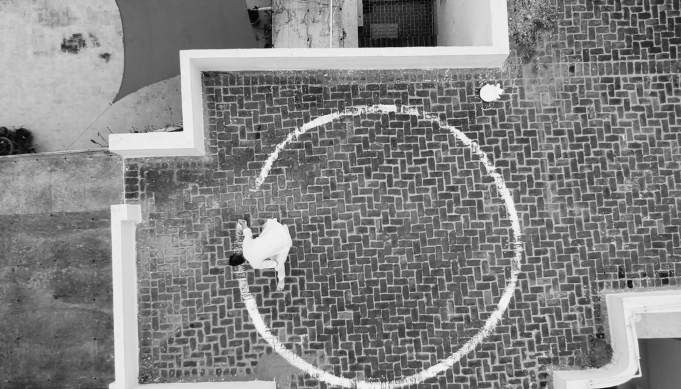
Himali Singh Soin. Setting the Stage For a Gathering of Friends, 2020. (Organizando el escenario para una reunión de amigos)*.
Setting the Stage for a Gathering of Friends, 2020, was made in the heart of the pandemic of 2020 in Delhi. it is about uncertainty, fear, chance, missed connections, false promises, a return to something we once felt. A repetition of something we had never experienced. It charts the path of an Ensō, a depiction of a whole or a void, a different cosmology, depending on the way you look at it, up-close or at a distance. The circle holds together the improvised elements of free jazz and the disparate footnotes found in fortunes opened at random. It sets the stage for a gathering of friends and proposes that waiting can be a form of love.
*Video, 10' 35''. Seleccionado por India Project 88, India

Himali Singh Soin Based between London and Delhi, is a writer and an artist who works with language, performance, sound and film. Singh Soin’s poetic storytelling often begins with sublime and unfathomable forces, yet grounds us in the political realities of the now. From mountains to glaciers, telecommunications to celestial powers, we come to reflect on borders and imperialism, justice and survival.
Cortesía de India Project 88, India
Neda Kovinić. Together Apart, 2020/2021 (Juntos separados)
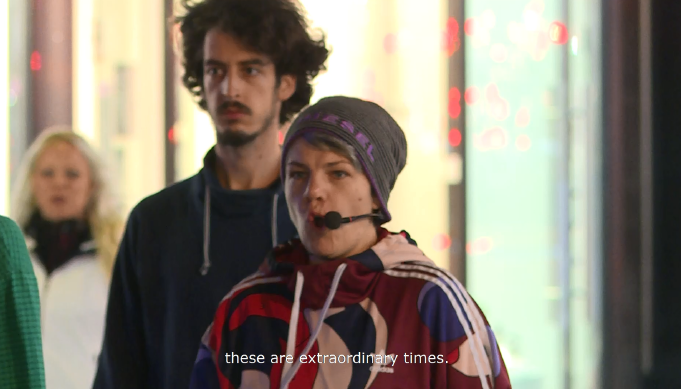
Neda Kovinić. Together Apart, 2020/2021 (Juntos separados)*.
Together Apart, 2020/2021, is a dance-narrative performance that confronts both the participants and the public with the (in)ability of performing and communicating in the times of pandemic culture. How are we supposed to practice togetherness and care through dance now when physical distancing is the ultimate performance? How can an interactive art process, which implies the practice of togetherness, palpable and corporal, not only virtual, be possible in the world of the pandemic?
In times of volatile life conditions and the possibility of haptic and corporal sociability, the new virus didn't just threaten the body but also modes of communication, behaviour, movement, worry, love and care. Neda Kovinić is using her dance and visual practice to warn us of the rhythm of the world that gobbles everything in its path leaving nothing in its wake.
*Video, 11'15''. Seleccionado por Belgrade Cultural Centre, Serbia
Neda Kovinić (1975) has graduated in fine arts at the Faculty of Fine Arts, and interior design at the Faculty of the Applied Arts in Belgrade. She holds a PhD at the Faculty of Fine Arts in Belgrade, Department of Multimedia. Since 1996, she has been exhibiting at solo and group exhibitions in Serbia and abroad. She has made ambient installations, thus forming art basis close to conceptual art. In her recent projects, she has been trying to face the facts of the multitude of temporality and the space of global capitalism – from the neoliberal to the conservative one, the retro-local and the national. She explores types of escapism in artificial autonomies, the space of escape and retreat, especially in former Yugoslavia after the wars and the rise of nationalism. Her latest research is based on creating networks between artists of conceptual dance and various nationalities, dance backgrounds and age, in order to create the practice of togetherness, and the exploration of social, political and art-political issues.
Cortesía de Belgrade Cultural Centre, Serbia
Artist Q&A Neda Kovinić
Where are you from and how did you become interested in moving image work?
I am from Belgrade, Serbia. My interests in moving image work came from exploring the great movie authors (Antonioni, Godard...), screened everyday in the cinemas during the war time in former Yugoslavia, in the nineties. The videos by conceptual artists from the seventies and many contemporary alternative experimental film festivals triggered my interest in this media. The camera appears as a “partner in crime” in my dance performative practice.
What inspired/influenced you to make the work?
I was inspired by the thoughts on pandemic, disaster-capitalism, body-politics, and care by P. B. Preciado, Pavle Levi, Sylvia Federici and Naoimi Klein, and by the various statements I collected from everyday speech of my friends, lovers, cousins, neighbours and social media. I connected these verbal, theoretical and poetic observations with body movements. The dancers I worked with faced the difficulties of dancing in the public space and doing contact improvisation because of constant changes of the measures of social and corporal distancing.
The expressive narration in the video culminates in a choreographed movement "knee-on-neck". The repression of the ruling structures raises the question of whether the immunized society, which is now being sought, represents a danger to the survival of art, sociability and even human beings.
What are you working on at the moment?
Currently I am working as an artist-curator of the large exhibition of the Association of Visual Artists of Serbia. I am also making new video research on the topic of loneliness and togetherness. I am exploring the compositions of the dancers in the deserted urban spaces, abandoned industrial zones and emptied tourist resorts… I am also preparing the first animated video of my drawings with imaginary choreographies, reflecting on the current impossibility of the collective projects in real spaces of the urbanscape and ongoing virtualization of artistic labour.